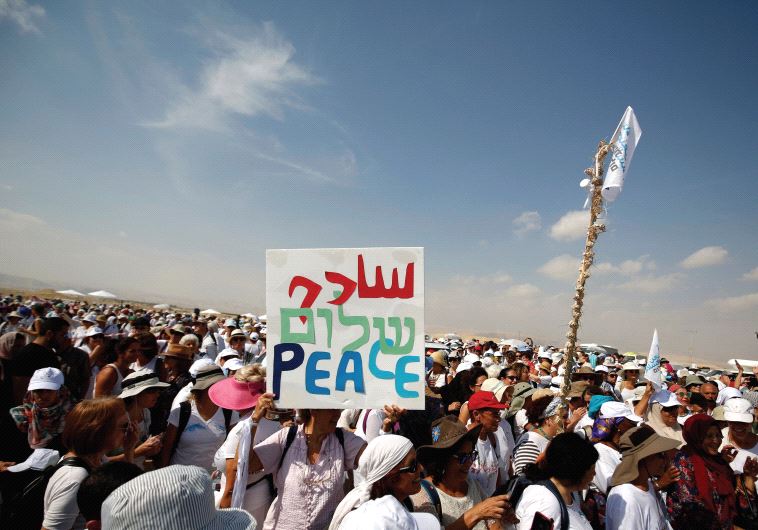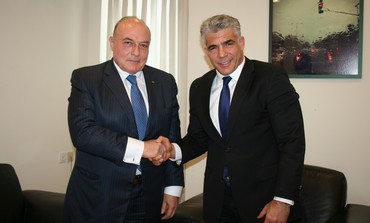When the Arab Peace Initiative (API) was formally issued in March 2002, there was a sense of great optimism that the decision of the Arab League to place a conditional welcome mat in front of Israel would serve as a meaningful incentive for Israel to move forward with the Palestinians in renewed peace efforts. The API was issued at the height of the Second Intifada as Palestinian suicide bombers were taking their biggest toll on Israeli civilians, and while Israel was beginning Operation Defensive Shield, aimed at destroying the Palestinian Authority and re-taking full control over the West Bank and Gaza. The API was seen as a potential way to end the Intifada.
Years later, in 2007, when the Second Intifada was winding down and renewed Israeli Palestinian coordination began in full swing, there was once again hope that the API would create positive public opinion in Israel.
Civil society efforts supported by international peace partners printed the API in Hebrew and distributed it to every home in Israel. Large poster billboards were placed along main highways in Israel with the flags of all of the Arab countries in support of the peace initiative. Many meetings, seminars and public and private events attended by Israelis and Arabs from all over the region were organized in support of the API.
The government of Israel never even responded to the initiative. Government ministers only stated that they saw the API as a “take-it-or-leave-it” ultimatum. They rejected the proposal that Israel had to withdraw from all of the territories it occupied in 1967, and they also believed the initiative would force Israel to accept the return of millions of Palestinian refugees to Israel.
I remember sitting with several of the key authors of the API who were bewildered by what they heard from Israeli officials. They never intended the API to be a take-it-or-leave-it deal. They saw it as an enormous incentive to Israel, knowing how much importance Israel placed on being recognized and accepted in the region. They stressed that with regard to Palestinian refugees, they wrote the words “to be agreed” (a just solution to the Palestinian refugee problem to be agreed upon in accordance with UN General Assembly Resolution 194) so that Israel would understand here was no demand for a full return of Palestinian refugees.
They believed that writing “implementation of Security Council Resolutions 242 and 338… and the land for peace principle, and Israel’s acceptance of an independent Palestinian state, with east Jerusalem as its capital, in return for the establishment of normal relations in the context of a comprehensive peace with Israel” would bring Israel to the table with a much greater willingness to negotiate with the Palestinians the end of the Israeli occupation.
That did not happen.
Now with six Arab countries having full peace with Israel, and more to come, it is clear that the Arab Peace Initiative is no longer relevant. What is relevant is that the Israeli-Palestinian conflict, Israeli occupation and control over the Palestinians still remains, as well as the binational non-democratic reality that exists between the river and the sea.
For those of us who want to end the occupation and search for ways to live in peace, we need to develop new strategies. It seems the two-state solution conceived through the Oslo process is no longer viable.
The total separation paradigm was never attractive to me. No Israeli government will be able to remove hundreds of thousands of settlers. I don’t currently see viability for a one-state solution that is democratic and in which there is full equality for people living on the land. It will probably take years before we can find an agreed solution.
In the meantime, it is quite clear that the PA and the international community, led by the United States and the European Union, will not give up the two-state solution. For the Palestinians, it is the ultimate international legitimacy for their right to self-determination. The closest proposal to enabling two states to exist must embody the principles that the entire land between the river and the sea is important to both peoples living here.
Lines drawn on maps will not diminish the importance of Judea and Samaria for Jews, or of Haifa, Jaffa, Ramle and Lod for Palestinians. No one wants to live in artificial cages, and free movement and open borders must be the aspiration of true peace-seekers. Perhaps this is not viable in the immediate future but this kind of plan must serve as a vision. A detailed version of these principles and more is embodied in the “Land for All – Two States, One Homeland” proposal that I, in principle, support.
Another action worth supporting is the initiative for Palestinian statehood recognition led by former Israeli ambassadors Ilan Baruch and Alon Liel. Their goal is to try to get as many countries as possible to recognize the state of Palestine, which just like Israel has no permanent defined borders at this time. The strategy is to force Israel to recognize the state of Palestine and then to negotiate borders and relations between the two states. Their goal is to remove the issue of Palestinian statehood from the negotiating table and to preserve the two-state solution. It also aims to significantly increase international pressure on both Israel and Palestine to return to the negotiation table.
Another strategy that seems to be gaining support, on the Israeli side, is the Initiative for Reducing the Conflict. Its basic premise is that we are years away from finding a solution to the conflict and therefore should find ways to reduce the conflict, which also increases the chances of enhancing stability and security.
To me, at first, it sounded like a way to make the occupation more comfortable. I looked into the initiative and spoke to some of the leaders and now believe this is not their goal. I also checked out the issues they are focusing on, and they are all issues that I also worked on over the years.
They are working on reducing the costs of Palestinian trade, making the Palestinian economy more competitive and viable. They are seeking to improve the whole process of obtaining work permits for Palestinians who want to work in Israel. They are working to enable the upgrading of the cellphone infrastructure so that Palestinians are not left behind with outdated technology. They are also advancing something very close to my own initiatives: improving the electricity network for Palestinians under Palestinian ownership and control.
These are all issues that today are in complete control of Israel, and they are serious conflict-enhancing issues. However, they can all be resolved in a way that improves the lives of Palestinians and gives them more control over their own lives. These are not conflict-resolving steps, but they are important and should be implemented.
The combination of working out a new vision for peace, with Israelis and Palestinians building new partnerships in an effort to reduce the conflict, enhances Palestinian independence, builds positive interdependence, and is what we need to do.
We must remain optimistic and together, with the young generation of Israelis and Palestinians, must never give up on actualizing the dream of cooperation, partnership and peace.


